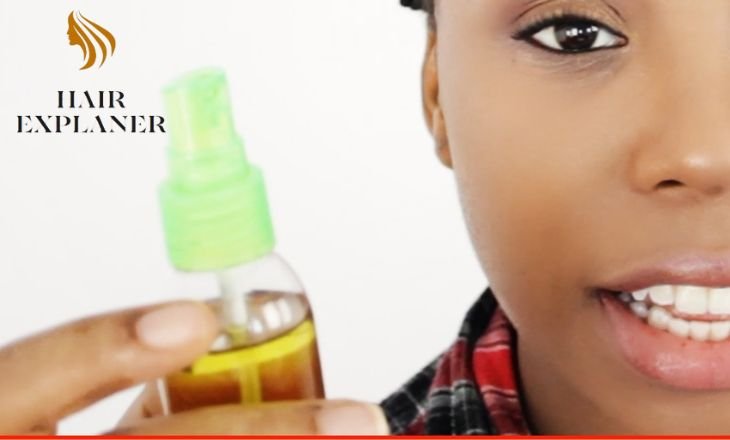Starting locs is an exciting journey, but it can feel overwhelming, especially in the early stages. For many, locs represent more than just a hairstyle; they reflect personal identity and cultural roots. Starter locs can become messy without proper care and lose their growth potential.
So, how can you care for starter locs effectively? In 2024, How To Maintain Starter Locs & Maintain Locs in 10 Steps 2024 is easier with our simple guide outlining ten key tips. Whether you’re new to locs or want to improve your skills, learning to care for starter locs will keep your hair healthy and vibrant as it grows.
Join us as we share practical strategies to help you care for your starter locs and build a strong foundation for healthy mature locs in the future!
how to maintain starter locs
Taking care of starter locs requires patience and attention. One important step is to keep your scalp clean without washing too often, as overwashing can cause dryness. Use a gentle shampoo made for locs and focus on cleaning the roots to prevent buildup while letting natural oils nourish your hair. Hydration is also key; adding light oils like jojoba or peppermint can promote growth and ease irritation.
Another important part of caring for starter locs is retwisting. While it might be tempting to twist your hair often, doing it in moderation helps keep your hair strong during its early stages. Use a light-hold gel or a natural product that suits your hair type without leaving harmful residue. Regular palm rolling can help shape each loc and connect the strands without putting too much stress on your scalp.
Consider joining a community or support group to share experiences and tips. Supporting each other with shared knowledge can make a big difference in your loc journey.
Starter Locs
Starter locs are a beautiful journey into natural hair, representing a commitment to self-expression and cultural identity. The process starts with small sections of hair, often made by twisting or braiding. This stage is like a canvas where each lock can tell unique stories as they grow. Embracing starter locs helps people connect with their hair texture and appreciate its natural patterns.
What makes starter locs interesting is how they change based on hair type, climate, and care. This personal growth encourages wearers to try different styles that reflect their individuality while respecting tradition. Taking care of starter locs requires patience and dedication, which mirrors life’s challenges and rewards.

Starter locs men
Starter locs for men are more than just a hairstyle; they represent self-expression and cultural identity. Many men are discovering the beauty and flexibility of locs, moving past traditional ideas of masculinity to find styles that match their taste. The process often marks a significant change, with starter locs symbolizing both physical transformation and personal growth.
Choosing the right method to start your locs is important. Options like two-strand twists or interlocking techniques can affect how your locs look and how easy they are to maintain. Taking care of your scalp and keeping it hydrated from the beginning is essential for healthy growth. This can turn what might seem like a challenge into a rewarding journey over time.
Ultimately, starter locs can be a way to express creativity. Men often experiment with colors and styles that reflect their personality, adding their unique touch to this traditional hairstyle.
Female starter locs styles.
Choosing starter locs can be an exciting journey for women who want a unique style. They offer great versatility, allowing you to show your personality from the start. Braided or twisted starter locs can create a striking texture that sets the stage for future growth. You can enhance your look with accessories like beads or colorful thread, adding a fun touch that evolves with your hair journey.
Another popular choice is using micro-locs or sister locs in different sizes. This modern twist highlights the beauty of natural curls. As your hair grows, you can style it easily—wear it down for a relaxed look or pull it up into stylish updos for any occasion. Adding colors, whether bold or subtle, can dramatically enhance your appearance while keeping your natural locks healthy.
Embracing these styles allows you to express yourself and celebrate the diverse ways women connect with their hair and heritage through local art.
Two-strand twist starter locs
Two-strand twist starter locs are a great way to start your loc journey. This method blends your hair’s texture and curl patterns, giving your locs a natural look as they grow. By twisting sections of hair together, you create individual locks that are easier to maintain and reduce frizz in the early stages. This technique also allows for creativity with different sizes and patterns.
Another benefit of two-strand twists is that they protect your hair from damage, helping it grow healthy even before your locs fully form. This method helps you connect with your hair as each twist changes over time, reflecting your personal journey. Many people find that this gradual change helps them appreciate their hair’s unique qualities and embrace its natural beauty.
Very short starter locs
Very short starter locs, or baby locs, offer a fresh way to embrace natural hair. Instead of waiting for hair to grow long, many people choose to start their local journey right away. This look shows off individuality and celebrates the beauty of textured hair. With short starter locs, people can try different styles that highlight their facial features and express their boldness.
These early stages of loc development create a close connection to one’s hair journey. It’s a time for experimentation, allowing wearers to test various maintenance routines without the commitment of long locs. As the locs grow, they mark personal growth and resilience. Many people feel empowered during this phase, as each twist or budding lock represents a step toward self-acceptance. This journey encourages creativity and spontaneity in hairstyles, celebrating changing textures and shapes.
Locks Hair
Locks are a way for people to express their culture and identity. These hairstyles go beyond looks; they symbolize heritage for many communities around the world. By wearing locks, individuals take back stories tied to oppression and turn them into symbols of pride and independence. Each twist and braid tells a personal story that connects history, spirituality, and empowerment.
Today, locks are becoming more popular as individuality is celebrated. Social media has helped this trend by showcasing amazing transformations that highlight creativity. People use vibrant colors and unique styling techniques to challenge traditional beauty standards. As more individuals seek authenticity in their fashion choices, it becomes clear that wearing locks is about personal connection as much as it is about looks.
Taking care of locks requires patience and mindfulness, turning daily maintenance into moments of self-care that go beyond just appearance.
Healthy, Thriving Locs in 10 Simple Steps
Get healthy and thriving locs with this easy 10-step routine. Follow these steps to achieve your loc goals!

1. Moisturize your locs properly
One mistake people often make when moisturizing their locs is using heavy oils or creams that can make the hair heavy. Instead, use lightweight, water-based products that can easily hydrate the locs. Consider using a leave-in conditioner or aloe vera gel to help keep moisture in without leaving residue.
It is important to know when and how often to moisturize your locs. Some may need daily moisture, while others do well with less frequent hydration.
Experiment with different schedules to find the best for your hair and lifestyle. Remember, well-moisturized locs are stronger against damage, so create a consistent hydration routine that suits your needs.
2. Condition your locs
Conditioning your locs is important for keeping your hair healthy and strong. Regular conditioning helps to moisturize your locs, preventing breakage and promoting growth. Use natural oils like coconut oil or shea butter to nourish and hydrate your locs.
When conditioning, focus on both the roots and ends to distribute moisture evenly. Deep conditioning treatments can strengthen and revitalize dry or damaged locs.
Try different products and techniques to find the best for your hair type. Consistency is key, so make conditioning a regular part of your hair care routine for noticeable improvements over time. With proper care, you can have beautiful, vibrant locs that show your dedication to maintenance.
3. Deep Condition your locs
Deep conditioning your locs is important for keeping them healthy and vibrant. Many people think locs are easy to care for, but a deep conditioning session can greatly improve moisture and reduce breakage. Choose a rich conditioner with ingredients like shea butter, avocado oil, or aloe vera gel for softness and shine.
When applying the conditioner, part your locs into sections to ensure even coverage and hydration for each strand. You can enhance the process by using heat, which helps the conditioner penetrate better. Try wrapping a warm towel around your head or using a hooded dryer for about 30 minutes to give your locs extra care.
After rinsing out the conditioner, use a light leave-in product made for locs to keep moisture without weighing them down. Regular deep conditioning not only revives your hair but also turns it into a self-care ritual that supports your loc journey.
4. Don’t over-wash your locs
Washing your locs too much can upset your scalp’s balance and remove natural oils that keep your hair healthy. While staying clean is important, washing too often can make your locs dry and weak. Instead of following a strict washing schedule, pay attention to factors like weather, your activities, and your scalp’s condition. Your locs do best when they keep their natural oils, so it’s okay to have some build-up between washes.
To care for your locs, learn to manage them without using too much shampoo and water. Try using diluted apple cider vinegar or herbal rinses instead of regular shampoo. These gentle methods clean and nourish your hair, helping it stay strong. Listen to your hair and let it breathe and grow in its way, rather than sticking to strict washing rules. Enjoy each stage of your locs’ growth by discovering what works best for you!
5. Dry locs thoroughly after washing
Drying your locs well after washing is important for their health and longevity. Wet locs can grow mold and mildew, which causes bad smells and weakens your hair. A good drying routine helps keep your hair strong and prevents buildup. Instead of just using a regular towel, try a microfiber cloth or a special turban made for wet hair. These materials absorb moisture without causing friction that can damage your locs.
Also, consider air-drying your hair. This keeps some moisture in and gives you time for self-care, like meditating or relaxing while your hair dries. If you want to dry your hair faster, use a hooded dryer on a low setting. This removes excess water without harming your locs.
Consistent drying helps your locs look good and keeps your scalp clean and healthy, creating a great environment for growth. Treating drying as an important part of your routine ensures that every wash leaves your locs refreshed and ready for anything!
6. Keep your locs healthy and happy with natural oils
Use natural oils like argan, jojoba, and coconut oil to keep your locs healthy. These oils have vitamins that nourish your hair and keep it moisturized. They also prevent breakage and promote hair health. Natural oils can balance your scalp’s oils and regulate oil production. Massaging these oils onto your scalp helps create a healthy environment for hair growth. They also protect your locs from UV rays and pollution, keeping them looking vibrant.

7. Don’t overdo it with oils or products
When caring for your locs, keep it simple for the best results. It might be tempting to use many oils and products, but too much can cause buildup and greasiness, making your hair heavy instead of enhancing its beauty. Focus on high-quality ingredients that nourish your hair without overwhelming it.
Pay attention to how your locs respond; sometimes, less is more for their health and shine. Regularly check what your hair needs instead of following strict routines based on trends or others’ advice. This approach helps you connect better with your locs and allows them to thrive.
By keeping your routine simple and mindful, you avoid adding unnecessary weight and find what truly improves the look and feel of your locs. Aim for balance; healthy hair is happy hair!
8. Wrap your locs at night with a satin scarf or bonnet
Wrapping your locs at night with a satin scarf or bonnet is important for keeping your hair healthy and beautiful. Unlike cotton, which absorbs moisture and can dry out your hair, satin helps keep natural oils in and reduces friction. This simple step protects your locs from breakage and helps them stay vibrant and shiny.
Try different wrapping techniques that fit your style and comfort while you sleep. Some styles can even show off your beautiful locs when you wake up! Using a colorful or patterned satin scarf can make your nighttime routine more fun and stylish.
This practice not only leads to healthier locs but also promotes self-care, making each morning feel like a fresh start for your lovely twists!
9. Don’t twist your locs, especially dry
Twisting dry locs may seem like a quick way to get a neat look, but it can cause more harm than good. Dry locs lack moisture, making them weak and prone to breakage during twisting. Instead of creating neat sections, you might end up with frayed and thin roots. Keeping your locs hydrated is key to improving their strength and appearance.
Try adding regular deep conditioning treatments or hydrating sprays to your routine to keep your locs healthy and vibrant. Well-moisturized locs are easier to style and help each twist support their overall health. When your locs have enough moisture, you’ll see curls and waves form naturally without needing to manipulate them too much. Remember, healthy locs shine with their natural beauty; sometimes, less is more.
10. Do Your Research
Research is key to a successful loc journey. Explore resources like books, documentaries, and online forums where experienced loc wearers share their stories. You’ll notice that loc maintenance practices and beliefs differ across cultures. This variety helps you find what works best for your hair type, lifestyle, and values.
Using social media can also boost your knowledge. Follow expert loctitians or influencers who promote healthy locs to get tips and see journeys similar to yours. Joining this community creates a sense of belonging and introduces you to new techniques for caring for your hair.
Conclusion
How To Maintain Starter Locs! Taking care of starter locs needs dedication, patience, and the right techniques for healthy growth. By following these 10 essential steps, from proper washing to regular maintenance, you can grow beautiful locs that show your unique style.
Consistency is important; your commitment will pay off as you see your locs change over time. Pay attention to your hair’s needs and make changes as needed to keep it healthy. Now that you have these tips, embrace the process and enjoy your loc journey!
Transform your look with our step-by-step guide on how to ombre hair at home. Get ready for stunning, professional results! #HowToOmbreHairAtHome
Frequently Asked Question
Which Method Is Better For Starter Locs?
Interlocking helps loc wearers keep their roots neat for a longer time. It is a good method for those who want a tidy appearance and lead an active lifestyle, such as athletes. Interlocking keeps your locs looking neat for a longer time than other methods.
What Makes Starter Locs Grow Faster?
Regularly moisturizing your hair and scalp, avoiding excessive manipulation, and maintaining a healthy diet can help promote faster growth.
Do Dreads Damage Hair?
Heavy dreadlocks can harm your hair roots. To prevent damage, avoid tight ponytails and twisting styles. Some think you don’t need to wash dreadlocks frequently.

